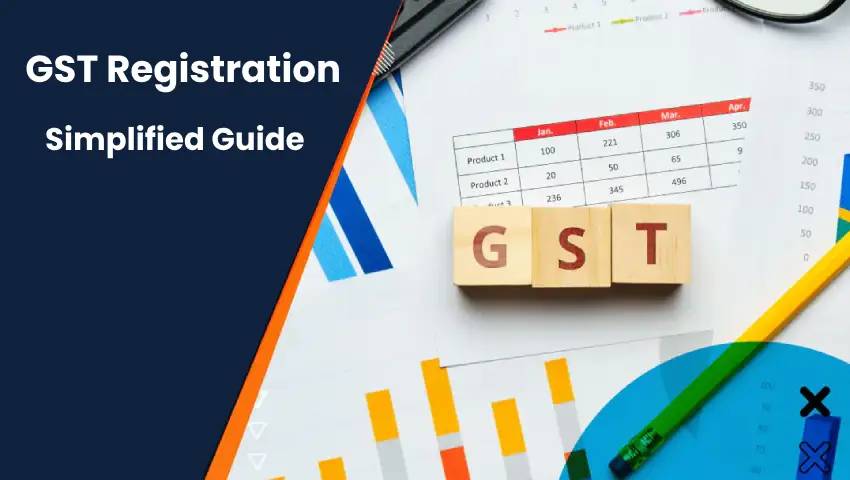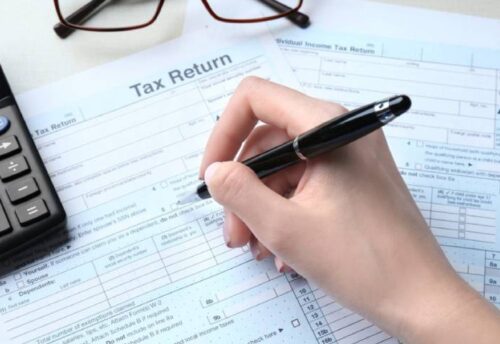
- 16/07/2025
- MyFinanceGyan
- 801 Views
- 2 Likes
- Tax, GST
GST Registration: Types, Documents, Fees and More – Simplified Guide
The Goods and Services Tax (GST) was launched in India on 1st July 2017. It replaced many indirect taxes like VAT, excise duty, service tax, etc., and created one single tax system across the country. This helped make tax collection easier and more efficient.
What is GST?
GST is an indirect tax that is collected on the sale of goods and services. Businesses with an annual turnover of Rs. 40 lakh or more must register for GST. For businesses in North-Eastern and hilly states, the limit is Rs. 10 lakh.
Types of GST:
GST is divided into four parts depending on the type of transaction:
Who Needs to Register for GST?
You must register for GST if:
- You were registered under any old tax system before GST
- Your business earns more than Rs. 40 lakh (Rs. 10 lakh for NE and hill states)
- You sell goods through an e-commerce platform
- You are an e-commerce aggregator
- You are a casual or non-resident supplier
- You are under reverse charge, where the buyer pays the tax
Types of GST Registration:
Different types of registrations are available depending on the business type:
Documents Needed for GST Registration:
The documents required depend on your business type. Here’s a simple list:
For Individuals / Sole Proprietors:
- PAN card
- Aadhaar card
- Photo
- Address proof
- Bank details
For HUF (Hindu Undivided Family):
- PAN of HUF and Karta (head)
- Address and bank proof
- Photo
For Partnership / LLP:
- PAN and Aadhaar of partners
- Partnership deed
- Proof of address
- Bank details
- Signatory authorization letter
For Companies:
- Company PAN
- PAN and Aadhaar of directors
- Address proof
- Bank details
- Incorporation certificate
- Signatory appointment proof
- MOA and AOA
Once the documents are approved, a 15-digit GSTIN (GST Identification Number) is issued to your business.
Note: There is no government fee for GST registration.
Penalty for Not Registering:
If a person or business does not register for GST when they are required to:
- Unintentional delay: 10% of the tax due (if over Rs. 1 lakh)
- Intentional delay: 100% of the tax due (full amount)
Benefits of GST Registration:
- No double tax: Earlier taxes were applied in layers. GST removes that, lowering your tax burden.
- Simple online process: You can register and file GST returns easily on the GSTN portal.
- Less paperwork: Earlier, businesses filed multiple returns for different taxes. Now GST has simplified it.
- Small business benefits: Under the composition scheme, small businesses pay lower tax and have fewer rules.
- Better logistics: Easier goods movement across states.
- Transparency: GST has brought more rules and better monitoring of unorganised businesses.
When Can You Cancel (Deregister) GST?
You can cancel your GST registration in these cases:
- Your turnover falls below the GST limit (Rs. 40 lakh or Rs. 10 lakh in special states)
- You stop your business
- Change in ownership of the business
- Change in business structure (e.g., from partnership to private limited)
Example: If your business in Maharashtra earned Rs. 50 lakh when you registered, but now earns only Rs. 20 lakh, you can cancel your GST registration.
How to Cancel GST Registration?
- File Form GST REG-29 for cancellation
- Mention:
- Inventory details (stock, raw materials, etc.)
- Business liabilities (loans or dues)
A GST officer will review your application and issue an order using Form GST REG-19 within 30 days.
Final Note:
GST registration has made India’s tax system simpler and more transparent. It helps businesses reduce tax burden, improve compliance, and benefit from easier procedures.
Disclaimer:
This article is only for educational purposes and not for any product promotion or tax advice.



